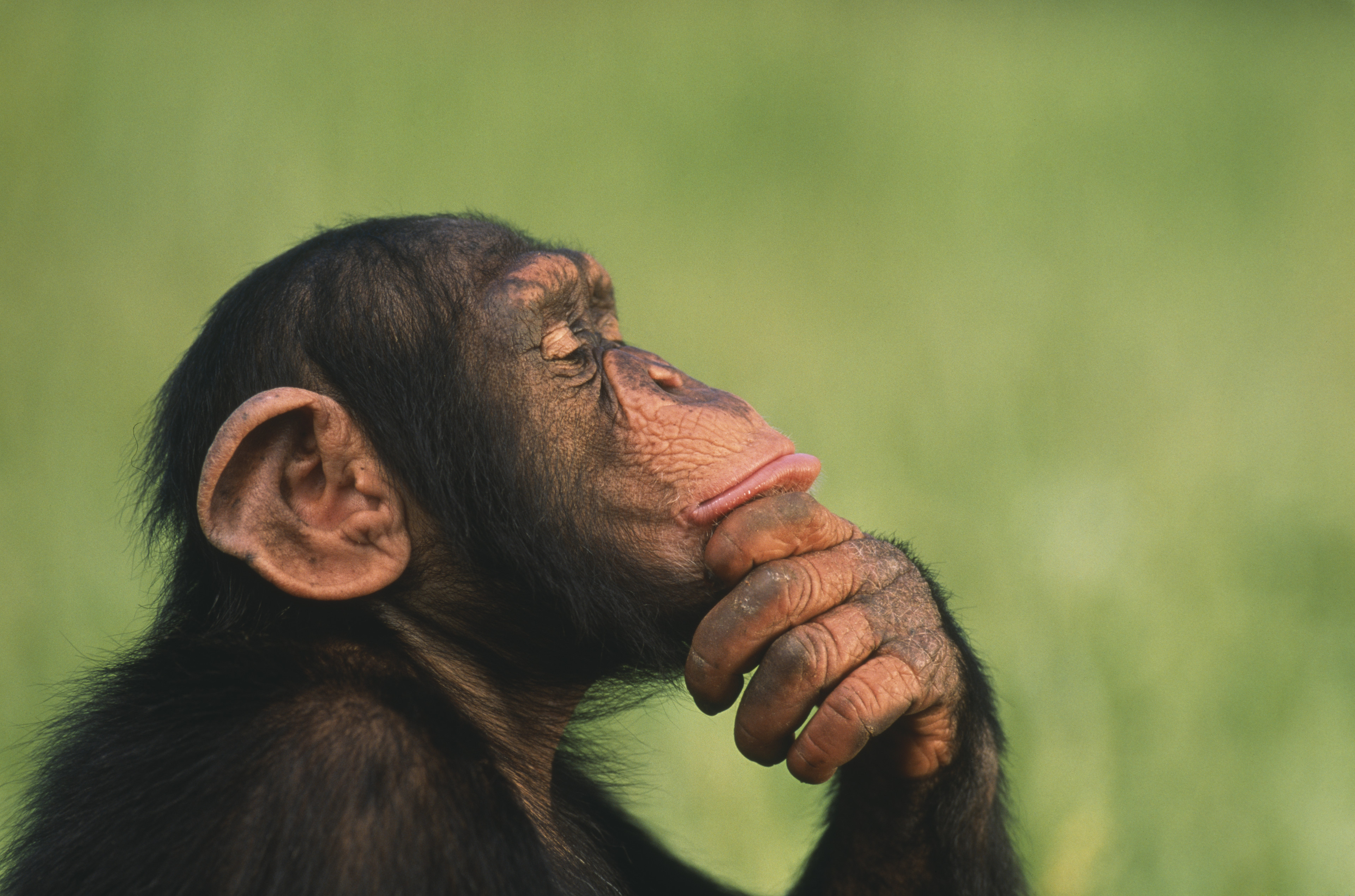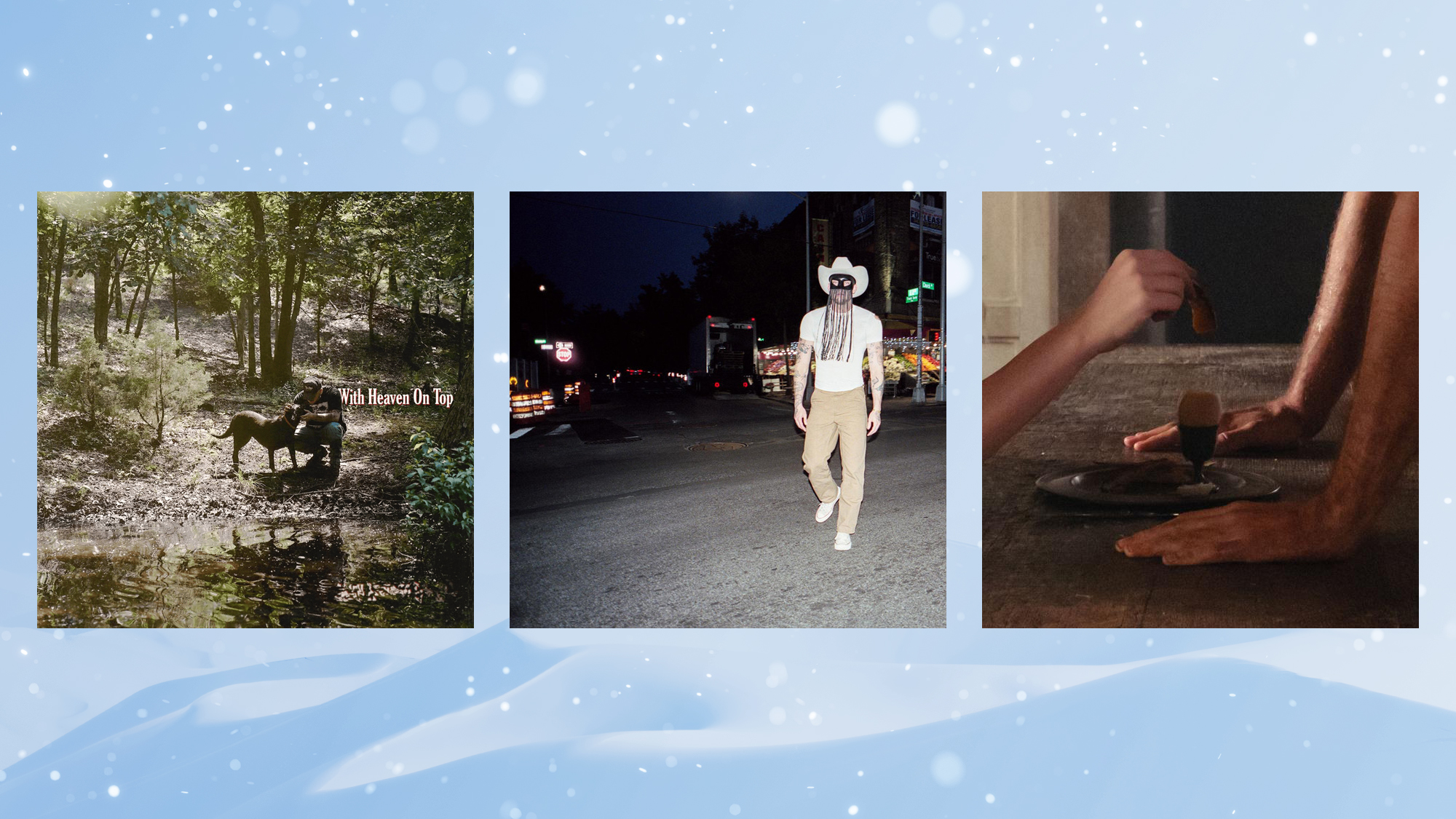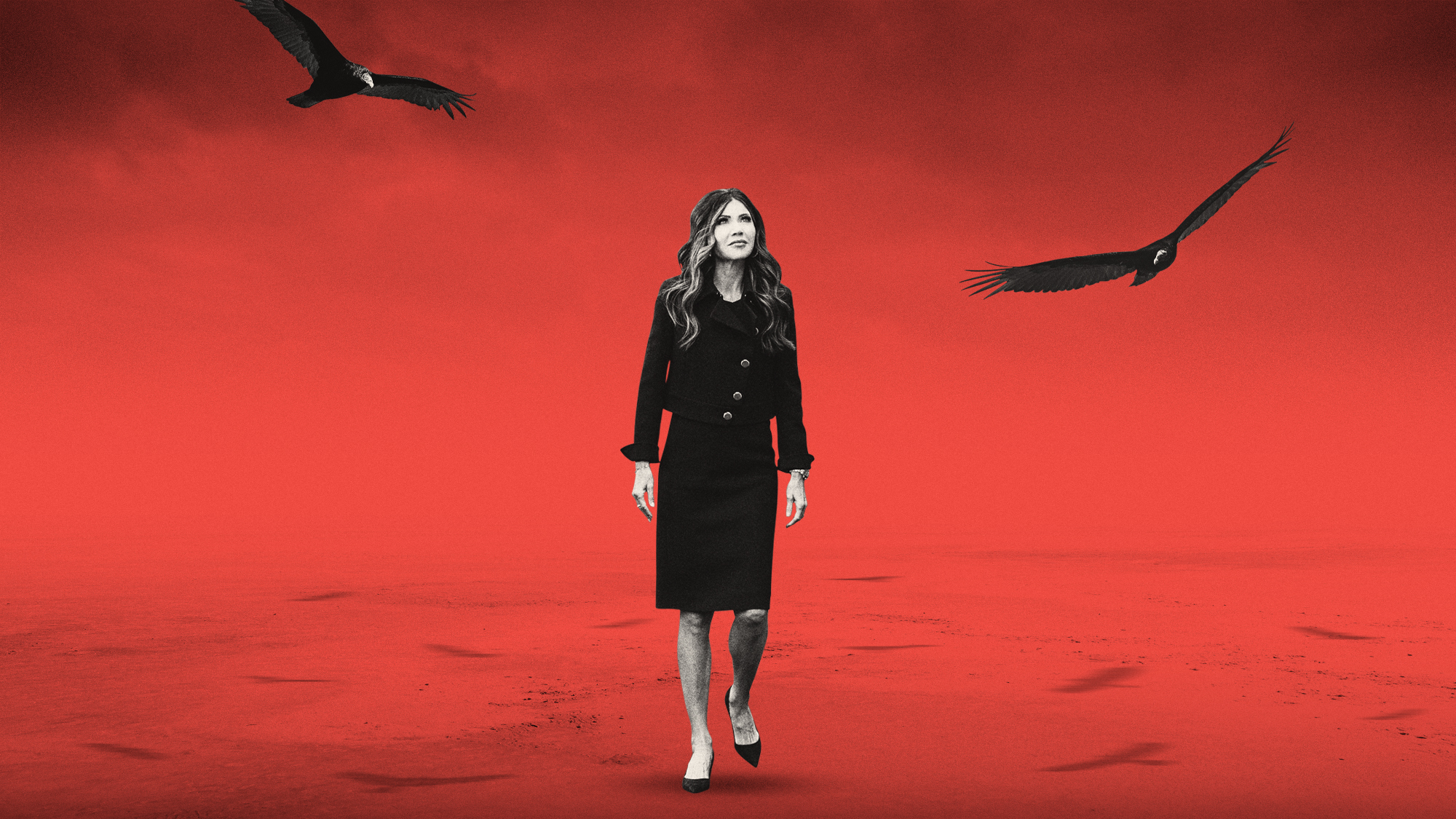What do animals think?
Scientists are trained to believe that the animal mind is unknowable. They should look closer.

SCIENCE USUALLY STEERS firmly away from questions about the inner lives of animals. Surely they have inner lives of some sort. But like a child who is admonished that what he really wants to ask is impolite, a young scientist is taught that the animal mind — if there is such a thing — is unknowable.
Permissible questions are "it" questions: about where it lives, what it eats, what it does when danger threatens, how it breeds. But always forbidden is the one question that might open the door: Who?
"Who" animals know who they are; they know who their family and friends are. They know their enemies. They make strategic alliances and cope with chronic rivalries. They aspire to higher rank and wait for their chance to challenge the existing order. Their status affects their offspring's prospects. Their life follows the arc of a career. Personal relationships define them. Sound familiar? Of course. "They" includes us. But a vivid, familiar life is not the domain of humans alone.
The Week
Escape your echo chamber. Get the facts behind the news, plus analysis from multiple perspectives.

Sign up for The Week's Free Newsletters
From our morning news briefing to a weekly Good News Newsletter, get the best of The Week delivered directly to your inbox.
From our morning news briefing to a weekly Good News Newsletter, get the best of The Week delivered directly to your inbox.
I traveled to observe some of the most protected creatures in the world — the elephants of Amboseli in Kenya, the wolves of Yellowstone in the United States, and killer whales in the waters of the Pacific Northwest — and in each place I found the animals feeling "human" pressures that directly affect what they do, where they go, how long they live, and how their families fare.
Do other animals have human emotions? Yes, they do. Do humans have animal emotions? Yes, they're largely the same. Fear, aggression, well-being, anxiety, and pleasure are the emotions of shared brain structures and shared chemistries, originated in shared ancestry. They are the shared feelings of a shared world.
THE WOLVES OF Yellowstone National Park's Lamar Valley attract human attention as nowhere else. The alpha wolf watcher, Rick McIntyre, follows wolves here every day. I don't mean five days a week or weather permitting; I mean that every day for 15 years so far, Rick McIntyre has been in the Lamar Valley. No misses. A man in his mid-60s, of angular features, Rick has had his eyes on wild wolves for more hours than any human ever has, quite possibly more than any living creature that isn't a wolf.
Rick can glance through a telescope at a wolf on a ridge a mile away and instantly tell you who it is by name, and recite its life. As Rick sees it, wolves and humans must deal with similar life problems, "such as figuring out when to face the risks of leaving home, finding your place in the world. There are endless similarities," he says. He notes, though, one difference between wolves and himself: "Certain wolves I've known — they were better at being a wolf than I've been at being a person."
A free daily email with the biggest news stories of the day – and the best features from TheWeek.com
"And if ever there was a perfect wolf," Rick says, "it was Twenty-one. He was like a fictional character. But he was real."
Even from a distance, Twenty-one's big-shouldered profile was recognizable. Utterly fearless in defense of his family, Twenty-one had the size, strength, and agility to win against overwhelming odds. "On two occasions, I saw Twenty-one take on six attacking wolves — and rout them all," Rick says. It "was like watching Muhammad Ali or Michael Jordan — a one-of-a-kind talent at the top of his game, the extreme high end of the skill set, talent outside of 'normal.'"
Twenty-one came into the world in the first litter of pups born in Yellowstone in nearly 70 years. His parents had both been trapped alive in Canada and shipped to Yellowstone specifically to reintroduce wolves into a system that had gotten out of balance, with too many elk for the land to bear. After almost 70 years without wolves, the elk had built to such numbers that winter for them meant scarcity and hunger. For the introduced wolves, though, the imbalance meant plenty of food.
But even though wolves had been absent longer than most people could remember, just before Twenty-one was born, someone shot his father. A wolf does not do well as a single mother, so researchers reluctantly decided to capture Twenty-one's mother and her pups and feed them for a few months in a 1-acre pen.
When humans brought food to the pen, all of the wolves fled to the opposite fence except for one pup, who would pace a little rise in the enclosure, putting himself between the humans and the rest of his family. This pup would later be given the tracking-collar number 21.
At age 2½, Twenty-one left his mother, his adoptive father, and his birth pack. Twenty-one waltzed into the family known as the Druid Peak pack less than two days after the Druids' alpha male had also illegally been shot. The Druid females welcomed this prime male wolf; their pups loved the big new guy. He adopted the pups and helped feed them. With no hassle at all, Twenty-one had left home and immediately become the alpha male of an established pack. It was his big break in life.
Twenty-one was "remarkably gentle" with the members of his pack, says Rick. Immediately after making a kill, he would often walk away to urinate or lie down and nap, allowing family members who'd had nothing to do with the hunt to eat their fill.
One of Twenty-one's favorite things was to wrestle with little pups. "And what he really loved to do," Rick adds, "was to pretend to lose. He just got a huge kick out of it." Here was this great big male wolf. And he'd let some little wolf jump on him and bite his fur. "He'd just fall on his back with his paws in the air," Rick half-mimes. "And the triumphant-looking little one would be standing over him with his tail wagging."
"The ability to pretend," Rick adds, "shows that you understand how your actions are perceived by others. It indicates high intelligence. I'm sure the pups knew what was going on, but it was a way for them to learn how it feels to conquer something much bigger than you. And that kind of confidence is what wolves need every day of their hunting lives."
Early in Twenty-one's run as an alpha, three females in his pack gave birth. That was extraordinary. Usually, only the alpha female, or "matriarch," breeds. The three litters reflected the unnaturally abundant food supply. An astounding 20 pups survived, swelling an already large pack to a hard-to-believe 37 wolves, the largest ever documented. Because the pack's size resulted from a food base so artificially swollen after seven decades devoid of wolves, the three-dozen-member pack might have been the world's all-time largest.
"Only Twenty-one had what it took to run an outfit that large," Rick comments. It wasn't all peaceful. The high density of wolves likely produced unnaturally high wolf-on-wolf conflict. In territorial defense and in pursuit of expanded territory, Twenty-one participated in plenty of fights.
Wolf territorial fights resemble human tribal warfare. When packs fight, numbers count, but experience matters an awful lot. Juveniles can seem lost in the confusion. Wolves often target the alphas of the rival pack, as if they fully understand that if they can rout or kill the experienced leaders, victory will be theirs.
The second most common cause of wolf death in the Rockies is getting killed by other wolves. (Getting killed by humans is first.) Twenty-one distinguished himself in two ways: He never lost a fight, and he never killed a vanquished wolf.
Twenty-one's restraint in letting vanquished rivals go free seems incredible. What could it be? Mercy? Another term for a person who does not press an advantage against a threatening opponent is "magnanimous." Can a wolf be magnanimous? And if so, why?
IN TWENTY-ONE'S LIFE, there was a particular male, a sort of roving Casanova, a continual annoyance. He was strikingly good-looking, had a big personality, and was always doing something interesting. "The best single word is 'charisma,'" says Rick. "Female wolves were happy to mate with him. People loved him. His irresponsibility and infidelity — it didn't matter."
One day, Twenty-one discovered this Casanova among his daughters. Twenty-one ran in, caught him, and began biting and pinning him to the ground. Various pack members piled in, beating Casanova up.
"Casanova was also big," Rick says, "but he was a bad fighter. Now he was totally overwhelmed and the pack was finally killing him. Suddenly Twenty-one steps back. Everything stops. The pack members are looking at Twenty-one as if saying, 'Why has Dad stopped?'" The Casanova wolf jumped up and — as always in such situations — ran away.
But Casanova kept causing problems for Twenty-one. Why didn't Twenty-one just kill him so he wouldn't have to deal with him anymore? It didn't make sense — until years later.
Fast-forward to after Twenty-one's death. Casanova briefly became the Druid pack's alpha male. But he wasn't effective, Rick recalls. He didn't know what to do, "just not a leader personality." And although it's very rare for a younger brother to depose an older one, that's what happened to him. Casanova didn't mind; it meant he was free to wander and meet other females.
Eventually Casanova, along with several young Druid males, met some females, and they all formed another pack. "With them," Rick remembers, "he finally became the model of a responsible alpha male and a great father." Meanwhile, the mighty Druids were ravaged and weakened by mange and diminished by interpack fighting; the last Druid was shot near Butte, Montana, in 2010. Casanova, though he'd been averse to fighting, died in a fight with a rival pack. But everyone in his pack remained uninjured — including grandchildren and great-grandchildren of Twenty-one.
Wolves can't foresee such plot twists any more than people can. But evolution does. Its calculus integrates long averages. By sparing the Casanova wolf, Twenty-one actually helped assure himself more surviving descendants. And in evolution, surviving descendants are the only currency that matters.
So in strictly survivalist terms, "should" a wolf let his rival go free? Is restraint an effective strategy for accumulating benefits? I think the answer is yes, if you can afford it, because sometimes your enemy today becomes, tomorrow, a vehicle for your legacy. What Rick saw play out over those years might be just the kinds of events that are the basis for magnanimity in wolves, and at the heart of mercy in men.
Early on, when Twenty-one was young and still living with his mother and adoptive father, one of their new pups was not acting normal. The other pups were a bit afraid of him and wouldn't play with him. One day, Twenty-one brought back some food for the small pups, and after feeding them, he just stood there, looking around for something. Soon he started wagging his tail. "He'd been looking for the sickly little pup," Rick says, "and finding him, he just went over to hang out with him for a while."
Rick suddenly seems to be searching inside himself for something deeper he wants to express. Then he looks at me, saying simply, "Of all the stories I have about Twenty-one, that's my favorite." Strength impresses us. But what we remember is kindness.
THE MAJORITY OF wolves die violently. Despite a violent, eventful life even by wolf standards, Twenty-one distinguished himself to the very end: He was a black wolf who grayed with the years and became one of the few Yellowstone wolves to die of old age.
One June day when Twenty-one was 9 years old, his family was lying bedded down when an elk came by. Everyone jumped up to give chase. He jumped up, too, but just stood watching the action and then lay down again. Later, when the pack headed up toward the den site, Twenty-one crossed the valley in the opposite direction, traveling purposefully somewhere, alone.
Sometime later, a visitor who'd been way up high in the backcountry reported having seen something very unusual: a dead wolf. Rick got a horse and rode up to investigate.
That last day, it seems, Twenty-one knew his time had come. He used the last of his energy to go up to the top of a high mountain. In a favorite family rendezvous site, where he'd been with his pups year after year, amid high summer grass and mountain wildflowers, Twenty-one curled up in the shade of a big tree. And on his own terms, he went to sleep for the last time.
Excerpted from Beyond Words: What Animals Think and Feel by Carl Safina. Henry Holt & Co., 2015. Reprinted with permission.
-
 ‘City leaders must recognize its residents as part of its lifeblood’
‘City leaders must recognize its residents as part of its lifeblood’Instant Opinion Opinion, comment and editorials of the day
-
 10 upcoming albums to stream during the winter chill
10 upcoming albums to stream during the winter chillThe Week Recommends As the calendar turns to 2026, check out some new music from your favorite artists
-
 Kristi Noem might not be long for Trumpland
Kristi Noem might not be long for TrumplandIN THE SPOTLIGHT The Homeland Security secretary has been one of the most visible and vocal architects of Trump’s anti-immigration efforts, even as her own star risks fading